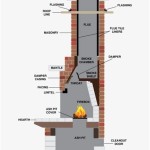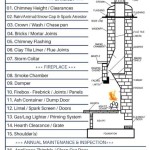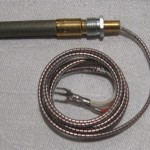Tile For Inside Fireplace: A Comprehensive Guide
Fireplaces, traditionally the heart of a home, offer warmth, ambiance, and a focal point for gatherings. While the structure itself is crucial, the interior finish significantly contributes to both the aesthetic appeal and the functionality of the fireplace. Tile, in particular, has emerged as a popular choice for lining the firebox, combining durability, style, and ease of maintenance. This article provides a detailed exploration of the considerations surrounding tile selection and application for the inside of a fireplace.
Selecting the appropriate tile for the inside of a fireplace requires careful consideration of several factors, including heat resistance, aesthetics, and installation requirements. Not all tiles are created equal, and choosing the wrong material can lead to cracking, discoloration, or even hazardous situations. The firebox, the interior of the fireplace where the fire burns, is subjected to extreme temperatures, making heat resistance paramount.
Heat Resistance and Material Composition
The primary requirement for any tile intended for use inside a fireplace is exceptional heat resistance. The firebox experiences temperatures that can easily exceed 1000 degrees Fahrenheit, especially with wood-burning fireplaces. Ordinary ceramic or porcelain tiles may not withstand these conditions, leading to cracking or shattering. Therefore, specialized tiles designed for high-temperature environments are necessary.
Several types of tiles are well-suited for fireplace interiors due to their inherent heat-resistant properties. Fireclay tiles, known for their durability and ability to withstand extreme temperatures, are a common choice. These tiles are made from a specific type of clay that is fired at very high temperatures, resulting in a dense, non-porous material that can endure repeated heating and cooling cycles without significant degradation. Fireclay tiles are often available in a range of sizes and shapes, allowing for diverse design possibilities.
Porcelain tiles, particularly those with a high-temperature rating, can also be suitable for fireplace interiors. Porcelain is denser and less porous than standard ceramic tile, making it more resistant to heat and moisture. Look for porcelain tiles specifically designated for use in high-heat applications, as not all porcelain tiles are created equal.
Another option is stone tiles, such as slate or granite. These natural stones offer excellent heat resistance and a unique aesthetic appeal. Slate, with its distinctive layered appearance, provides a rustic and earthy feel, while granite offers a more polished and sophisticated look. When using stone tiles, it's essential to ensure they are properly sealed to prevent moisture absorption, which can lead to cracking in extreme heat.
Regardless of the tile material chosen, it is crucial to verify its heat resistance rating and suitability for fireplace applications before installation. Consult with a tile supplier or installer to ensure the selected tile meets the specific requirements of the fireplace and local building codes.
Aesthetics and Design Considerations
Beyond heat resistance, the aesthetic appeal of the tile is a significant factor in the overall design of the fireplace. The tile chosen for the firebox should complement the surrounding décor and enhance the visual impact of the fireplace as a focal point in the room. The options are virtually limitless, ranging from classic and traditional styles to modern and contemporary designs.
For a traditional look, consider using brick-like tiles or natural stone tiles with a rustic texture. These materials evoke a sense of warmth and heritage, creating a cozy and inviting atmosphere. Subway tiles, arranged in a classic pattern or a more creative layout, can also contribute to a traditional aesthetic.
Modern designs often incorporate sleek and minimalist tiles with clean lines and neutral colors. Large-format porcelain tiles in shades of gray, black, or white create a sophisticated and contemporary look. Glass tiles, with their reflective surface, can add a touch of glamour and sparkle to the fireplace interior. Metallic tiles, such as stainless steel or copper, offer a bold and industrial aesthetic.
The color of the tile is another important consideration. Darker colors, such as black or dark gray, tend to absorb heat more effectively, which can be beneficial for increasing the efficiency of the fireplace. However, darker tiles may also show soot and ash more readily, requiring more frequent cleaning. Lighter colors, such as white or beige, can brighten up the firebox and create a more open and airy feel, but they may be more prone to staining.
The pattern and texture of the tile can also significantly impact the overall design. Intricate patterns, such as herringbone or chevron, can add visual interest and character to the fireplace. Textured tiles, such as those with a raised or embossed surface, can create a tactile and visually appealing effect. Consider the size and shape of the tile in relation to the size of the firebox. Larger tiles can create a more seamless and modern look, while smaller tiles can add detail and intricacy.
Ultimately, the aesthetic choice depends on personal preference and the overall design vision for the room. It is helpful to gather inspiration from design magazines, websites, and showrooms to explore different tile options and visualize how they would look in the fireplace. Consulting with a design professional can also provide valuable guidance and help in making the right choices.
Installation and Maintenance
Proper installation is crucial for the longevity and performance of the tile lining the fireplace. Using appropriate materials and techniques will ensure the tiles adhere securely to the firebox and withstand the extreme temperatures and stresses associated with fireplace use. Furthermore, ongoing maintenance is necessary to keep the tile looking its best and prevent deterioration.
Before installing the tile, it is essential to prepare the surface of the firebox properly. Remove any existing tile or debris and clean the surface thoroughly. If the firebox is made of brick or concrete, it may be necessary to apply a layer of heat-resistant mortar to create a smooth and even surface for the tile to adhere to. This mortar should be specifically formulated for high-temperature applications.
Use a heat-resistant thin-set mortar to adhere the tiles to the firebox. Apply the mortar evenly to the back of the tile and press it firmly into place, ensuring proper alignment and spacing. Use tile spacers to maintain consistent grout lines. It is important to use a non-sanded grout for tile installations within a fireplace. Sanded grout can be more susceptible to cracking due to the expansion and contraction caused by the high temperatures. After the mortar has cured, apply a heat-resistant grout between the tiles, filling the joints completely. Wipe away any excess grout with a damp sponge before it hardens. Allow the grout to cure fully before using the fireplace.
Sealing the grout lines is essential to prevent moisture absorption and staining. Use a high-quality grout sealer specifically designed for use in high-temperature environments. Apply the sealer according to the manufacturer's instructions. Regular cleaning is necessary to maintain the appearance of the tile. Use a mild detergent and water to wipe down the tiles. Avoid using abrasive cleaners, as they can scratch or damage the surface. For stubborn stains, such as soot or ash, use a specialized tile cleaner formulated for removing fireplace residue.
Inspect the tile regularly for signs of cracking or damage. If any cracks are discovered, repair them promptly to prevent further deterioration. Small cracks can often be filled with a heat-resistant epoxy or sealant. For larger cracks or damaged tiles, it may be necessary to replace the affected tiles.
By following these installation and maintenance guidelines, homeowners can ensure that their fireplace tile remains in excellent condition for many years, providing both aesthetic appeal and reliable performance.

Inside Herringbone Pattern Fireplace Tile Ideas Surrounds Home Stone Mantel

72 Tile Fireplaces To Accent Your Living Room Digsdigs

72 Tile Fireplaces To Accent Your Living Room Digsdigs

What Are The Best Tiles For A Fireplace Rotherham Centre

Newest Free Gray Fireplace Tile Style It Can Be Winter While The Snow Have Not Decreased Nevertheless Act Home Decor Interior Design

Diy Tile Fireplace Makeover The Home Depot

These Tiled Fireplaces Are Swoon Worthy Tileist By Tilebar

Hot Fireplace Tile Trends Bedrosians Stone

Our Favorite Fireplace Design Ideas The Tile Blog

How To Tile A Fireplace Using Encaustic Tiles Boo Maddie








